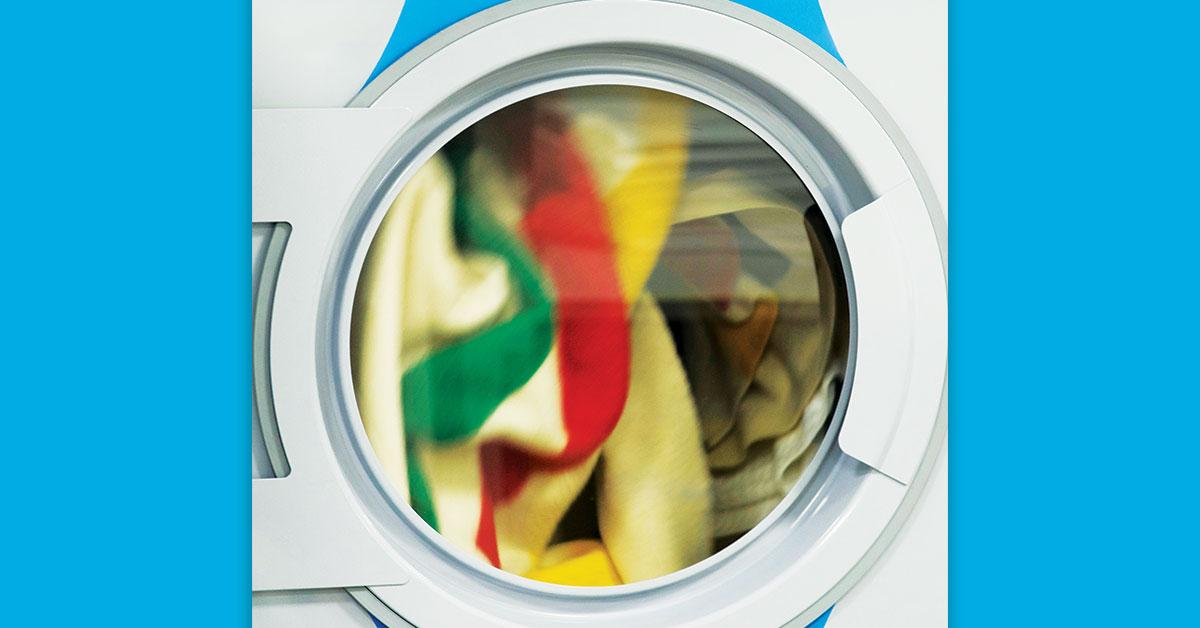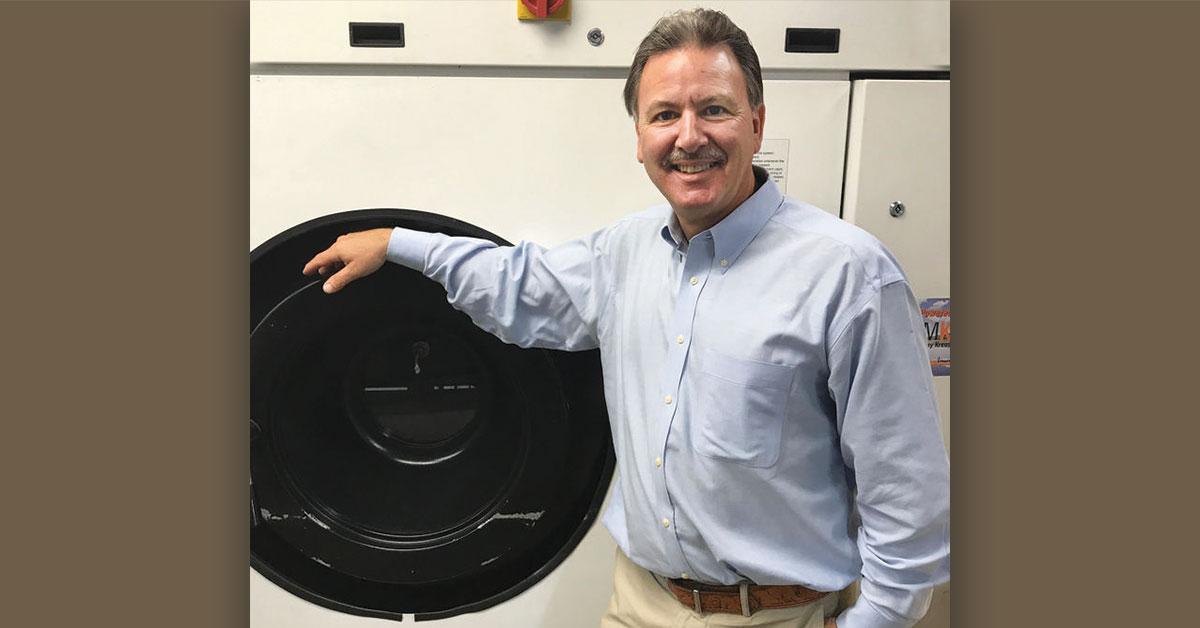CHICAGO —
GRAND RAPIDS, MICHIGAN
“There was a Dry Clean Only coat that had been refused by several cleaners. It was a custom made $8,000 cashmere coat and everyone was afraid of ruining it. Andy took one look at it, tossed it into one of our wetcleaning machines, set it to a hand-wash program, and walked away. It came out absolutely perfect, free of all stains, even the salt stains we commonly have to deal with every winter in Michigan. They were shocked when we told them we did it in water.”
That’s Chris Curtis, third generation co-owner, along with his brother Andy, of Grand Rapids, Mich.-based Curtis Cleaners. The business was founded by their grandfather Richard Curtis in 1957, and was taken over in the early 1980s by their father John Curtis and his brother-in-law Kevin Smith.
Chris Curtis notes that besides their 50-pound drycleaning machine, they also have five wetcleaning washers, all, he relates, “dual purpose for both wet cleaning and laundry,” along with six wetcleaning dryers, all with residual moisture controls.
The biggest benefit from wet cleaning, he says, is superior garment cleaning capabilities.
“The ability to remove wet-side stains from ‘dry clean only’ garments gives us a nice advantage over the competition,” Chris states.
“We’ve managed to survive our growth with one 50-pound drycleaning machine because of wet cleaning. Our late uncle, Kevin Smith, who had a passion for wet cleaning, used to explain to me: ‘We wet clean 70% of the garments that normal dry cleaners have to put in the drycleaning machines.’”
Andy adds that today, “We wet clean close to 90% or better and some days we don’t even turn the drycleaning machine on.”
Chris adds: “Wet cleaning uses two machines, a washer and a dryer; this allows a wet cleaner to process more garments in the same amount of time.”
They first started wet cleaning almost three decades ago in the 1990s as Chris relates: “Our sister company Curtis Equipment hosted an open house with Wascomat for its new wetcleaning system.”
Curtis says their business purchased the equipment used at that open house and they became the second Wascomat wetcleaning operator in the U.S. He adds: “We have always tried to be a user of the equipment we sell and be at the forefront of new or improved technologies.”
Today, the brothers operate two retail stores with laundromats, six delivery routes, and have about 35 employees, and the operation covers an area known locally as West Michigan, which they explain is essentially the Grand Rapids area westward to the Lake Michigan shoreline.
Not many of their customers know what wet cleaning is, Chris says, and explains how they try to promote it on their website and with flyers at the door. “We love to offer tours and explain the process when we have a customer that wants to know the details.”
Curtis offers some tips for owners who might be thinking of adding wet cleaning to their operations, along with what they can expect if they start wet cleaning:
“Purchase the proper equipment. You can’t professionally wet clean with regular commercial laundry equipment and traditional finishing equipment,” he notes.
“Chemistry is critical. You don’t just need a supplier with the proper detergents, you need a rep with wet cleaning knowledge and experience — that’s a must to ensure success.” He gives a for instance: “We use Pariser Industries and rep Tim Hush has been phenomenal.”
Curtis adds that, “Tensioning finishing equipment is required to finish wet-cleaned garments effectively and efficiently. We have removed all of our traditional finishing equipment, such as the legger and hot heads, in favor of tensioning equipment and up-air vacuum boards, like the European Style.”
He says, “We also just removed our traditional doublebuck shirt presses and installed tensioning shirt units, all blown, no hot heads.”
Curtis shares this parting thought: “The upfront equipment costs are less for wetcleaning machines compared to drycleaning machines. It’s a bit of a learning curve, but once you get it, you’ll never look back!”
WEST HARTFORD, CONNECTICUT
“The benefits of wet cleaning are being able to clean and restore items which were otherwise impossible to restore in dry cleaning. Wet cleaning can help save spotting labor since the majority of stains are on the wet side. Remember if it goes in wet, it needs water to come out. Wet cleaning leaves more garments whiter and brighter than dry cleaning. One of the greatest benefits of all is the way the garments smell. No solvent odors or residual smells that solvents can leave behind.”
That’s Phil Cote, president and owner of West Hartford, Conn.-based French Cleaners, which specializes in couture cleaning, bridal care, and restoration, as well as regular dry cleaning, laundry and alterations. Cote is fourth generation with more than 30 years of experience. His son-in-law Mark Hatch, general manager, has three years experience, and represents their fifth generation.
Cote points out his operation has, “One Miele wetcleaning system, made up of one machine and two dryers. We also have two drycleaning machines. About 30-40% of our garments are wet-cleaned.”
The cleaners was founded in 1911 and has been in the same location since 1925. Two families started the business, and Phil purchased it from his father-in-law in 2000, continuing the family operation. French Cleaners operates multiple routes and does production at its one facility in West Hartford.
Describing his operation as a progressive dry cleaner, he says, “We have always been open to the latest technologies and have always been receptive to new ideas. In 1999 when wet cleaning was in its first stage in the U.S. we were the first in our area to offer this service.
“Working closely with Rich Fitzpatrick of Miele Products from Germany, who is currently the head of Kreussler Chemical Co. in the U.S., we were introduced to this wonderful process.”
He notes that wet cleaning gave his operation, “Another incredible tool to use to turn out superior cleaning. In addition to being able to clean an Armani Wool suit with vomit all over it — returning it to the customer in perfect condition — we were finding that many items we previously drycleaned came out much better in wet cleaning.”
He points out that, “White silk blouses with perspiration stains or whites that had been turning dingy from many years of dry cleaning were quickly cleaned and restored to a beautiful bright white! Antique wedding gown restoration also became much easier.
“Cashmere sweaters with wine spills were dealt with so easily compared to the previous spotting and drycleaning method. We clearly had an edge on our competition when nobody else was doing it. As time went on we have moved even common items to wet cleaning to clean better and cut labor costs.”
Some of Cote’s clients are really tuned-in to the wet method he explains: “Very recently I had a ten minute conversation with a customer regarding wet cleaning and how we utilize that system with our standard drycleaning services. This customer became an extremely high volume customer that day and he had four huge bags picked-up for delivery service.
“He was looking for an expert to handle his garments and I think he was impressed that we had all the answers regarding how his items would be handled.”
Is the day coming when wet cleaning will be the dominant cleaning method in our fabricare world?
Cote thinks it’s a matter of ecology vs. economy. There are many factors to consider.
“With the current availability of non-toxic drycleaning solvents, I believe many garments can be cleaned quicker and need less finishing than items processed in wet cleaning,” he relates.
He goes on to explain that with labor costs as the largest expense to dry cleaners and minimum wages set to go up significantly across the country, he feels this is the largest deciding factor as to how much wet cleaning will grow or not. Water is another factor.
“With energy costs becoming stable and price of water going up, I feel that this will be an obstacle for wetcleaning growth,” he says. “On the other hand, labor is reduced in the wetcleaning process for items with water soluble stains letting the machine do the work versus an employee on a spotting board.”
Cote adds one last consideration for anyone thinking of going to a mostly wetcleaning operation: “The space factor. True wet cleaning requires hanging space for items to dry. It is important to plan enough space to hang-dry wetcleaned items while they are drying.”
He’s got a tip for other owners thinking of adding wetcleaning services:
“Make sure you have the appropriate drying technology and leverage your chemical distributor and supplier to ensure you have the right products being added along with the right programs on your machine.”
He says to keep, “Pushing your equipment and chemical vendors to ensure the chemistry is correct and the equipment is functioning as designed.”
French Cleaners recently made a lot of process modifications to tweak their system and now the garments are coming out of the dry wheel with a very soft finish, similar to the drycleaning side.
Cote concludes: “The benefit is they are now stain-free and have a great smell which is extremely important with our market.”
We’ve heard from garment care owners in the midwest and the east coast about wet cleaning, but now let’s hear from operators on the west coast and the southwestern U.S. all about wet cleaning.
Check back Thursday for the conclusion.
Have a question or comment? E-mail our editor Dave Davis at [email protected].



